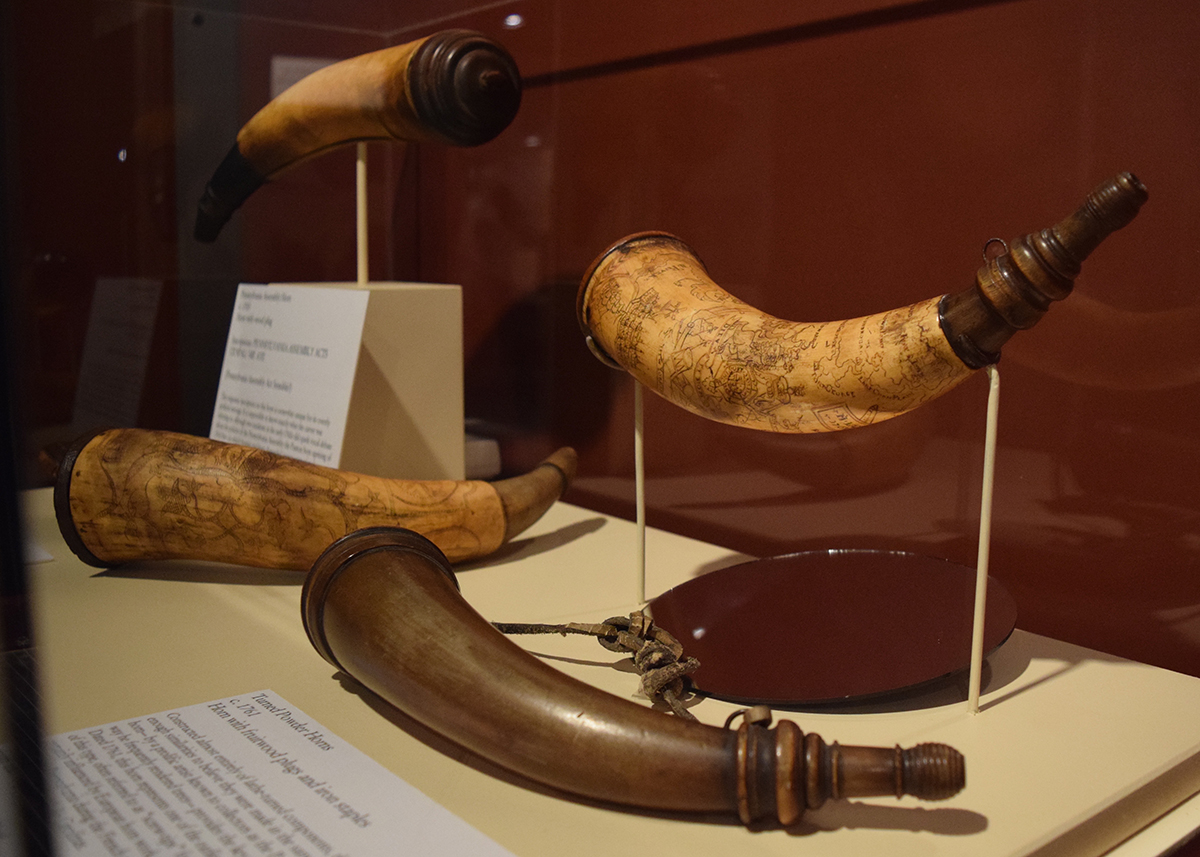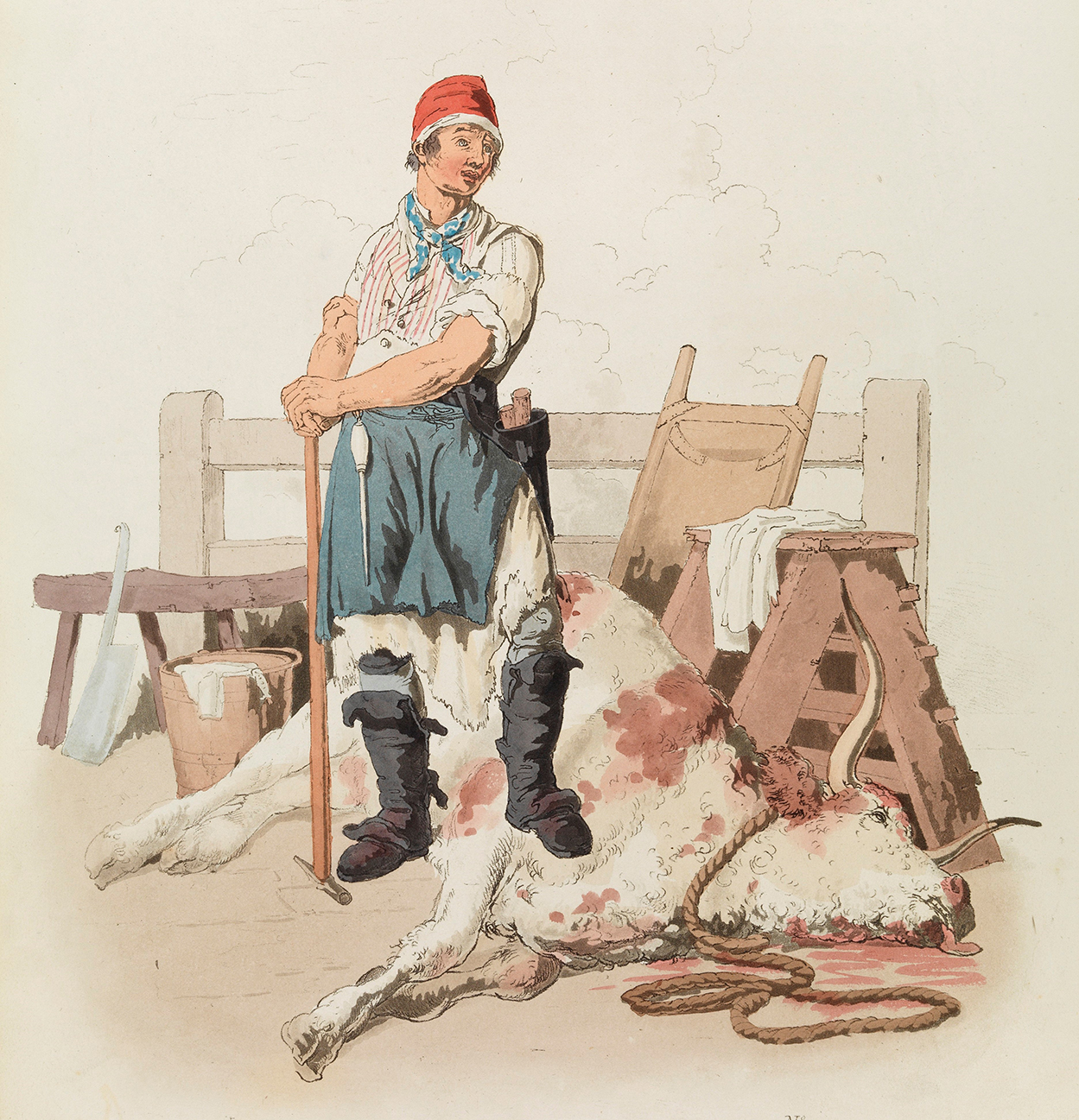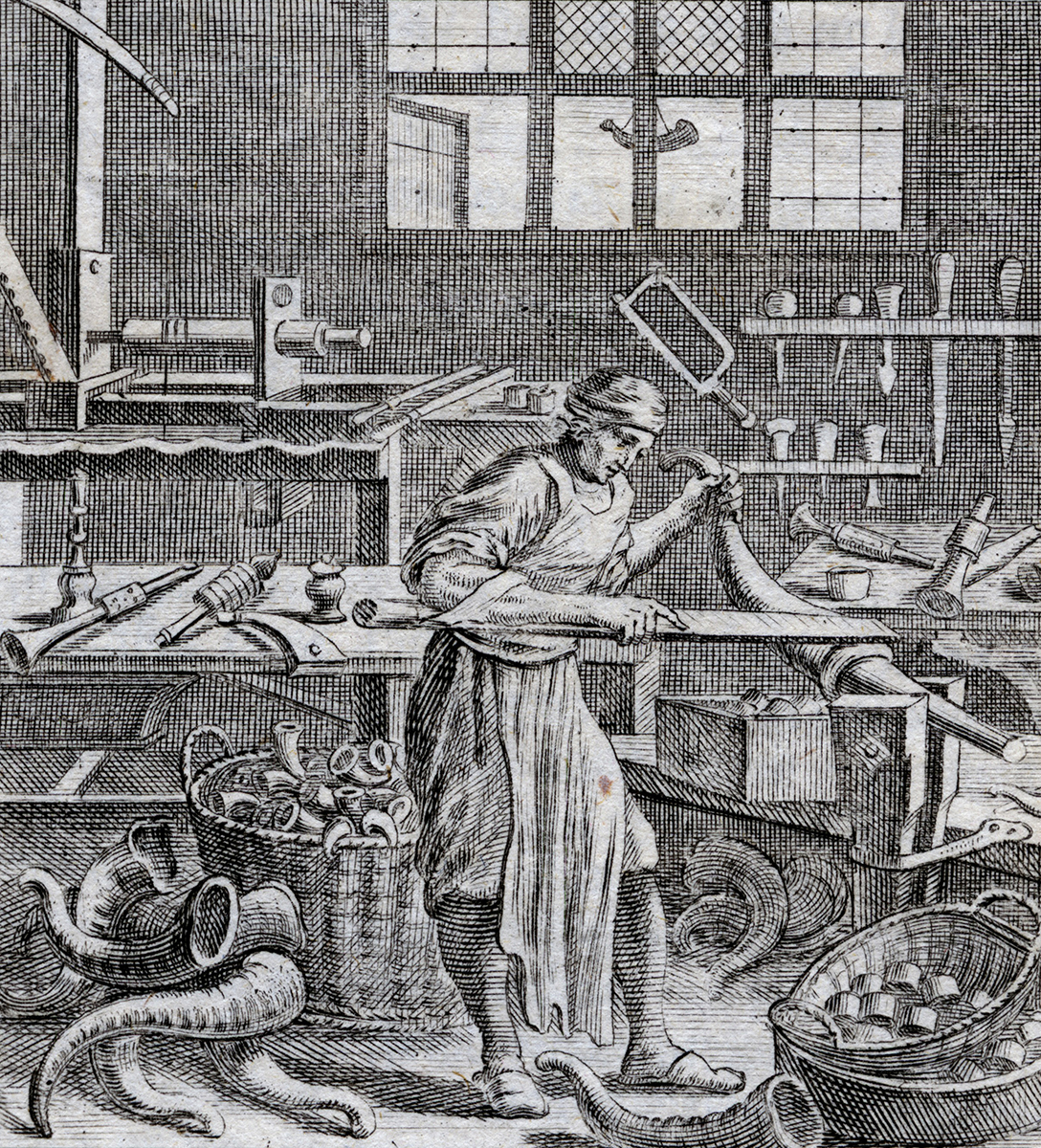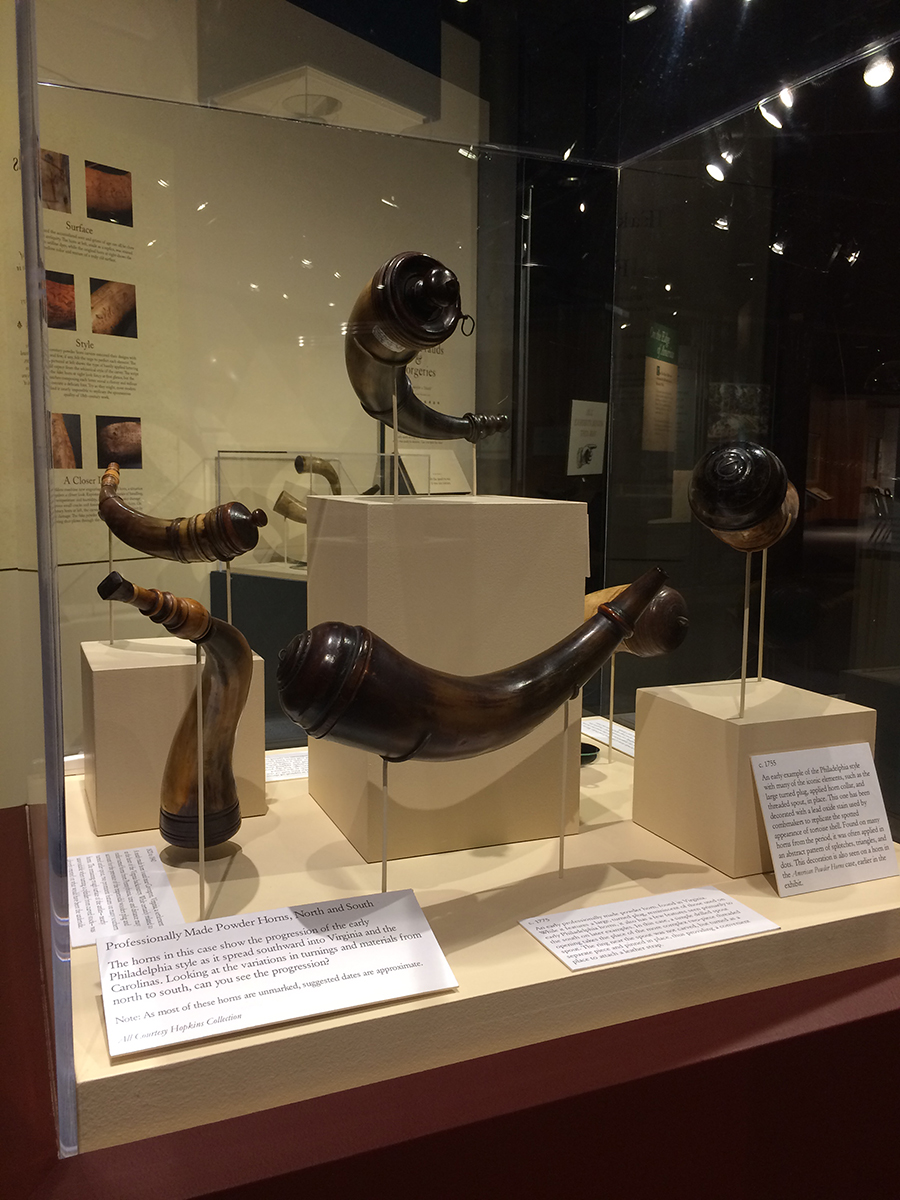In colonial America, bovine animals like cows, steer, and oxen sustained a variety of trades, from slaughtermen and butchers to tanners and shoemakers. In addition to these, a now-little-known class of craftsmen called horners, or combmakers, transformed the irregular and gnarly horns of these animals into an array of beautiful and useful objects. Heating the naturally thermoplastic horn almost to the point of scorching it, they pressed and molded combs, spoons, and translucent panes for lanthorns. Other articles, such as cups, ink wells, and snuff boxes were artfully turned using a foot-powered reciprocating lathe.
As highly skilled old-world craftsmen set up shop in America, horners and combmakers likely established themselves in most sizable colonial towns, though at least two documented craftsmen chose the colonies’ largest city, Philadelphia, for their home base. During the middle decades of the 18th century, as intermittent colonial wars with France periodically drove up demand for military goods, Philadelphia craftsmen did their best to cash in. In mid-June 1758, George Washington, busy supplying his provincial troops for the upcoming expedition against Fort Duquesne, suggested to Col. Henry Bouquet that powder horns might be “ordered to be made at Philadelphia, & sent from thence.”[i] Less than a week later, Brigadier General John Forbes, in Philadelphia at the time, told Bouquet that he was sending 28 dozen powder horns to Carlisle to be “disposed of as you shall direct,” and would have another 20 dozen ready for shipment by the end of the week.[ii] As vessels laden with British goods occasionally carried powder horns to Philadelphia, it is not certain where Forbes’ horns were made, though Washington’s comments suggest that he thought local craftsmen capable of doing the work. The following year, 1759, a Philadelphia combmaker named Christopher Anger advertised powder horns, in addition to combs and punch ladles, among his wares.[iii]
While no signed horn by Anger is known to exist, the latter half of the French and Indian War marked the emergence of a style that would become synonymous with Pennsylvania in later decades. Known as “screw-tips” among modern-day collectors, they feature intricately turned and threaded horn spouts and decorative bands, as well as bulbous wooden plugs turned from walnut or cherry. Seldom marked in any way, their relative chronology has been established by a handful of horns dating from the mid-1750s onward.
In the 18th century, settlement and commerce in backcountry Pennsylvania flowed outward from Philadelphia in two major directions. To the west lay the Forbes Road, a military path that cut through the mountains to Fort Pitt, while a route known as the Great Wagon Road cut southwest from Lancaster, following mountain passes through Maryland before tracing the Shenandoah Valley in Virginia. Along both routes, horners, combmakers, and turners set up shops, large and small, to turn out powder horns and other objects for their own local markets and beyond. While large-scale production became the hallmark of the eastern counties of Pennsylvania, the southern highlands produced innumerable variations indicative of scattered workshops catering to smaller communities, as well as those passing through.
Today, the rich legacy of these horns, which make up the vast majority of those produced from Pennsylvania and points south during the 18th and early 19th centuries, has been preserved by a handful of collectors and scholars.
Visitors to the Fort Pitt Museum’s temporary exhibition From Maps to Mermaids: Carved Powder Horns in Early America, can see over a dozen of these plain, but graceful, powder horns, in addition to nearly 40 others, on display through Dec. 31, 2018. While seldom marked with carving of any kind, their heavily worn surfaces tell us much about the spread of people and goods across the early American backcountry west and south of Philadelphia.

[i] George Washington, “Memoranda,” June 14, 1758. Printed in S.K. Stevens, et al, The Papers of Henry Bouquet, Vol. II. Harrisburg, PA: Pennsylvania Historical and Museum Commission, 1951, p. 83.
[ii] Ibid., John Forbes to Henry Bouquet, June 19, 1758, pp. 112-113.
[iii] Christopher Anger, Advertisement in the Pennsylvania Gazette, October 18, 1759.
Mike Burke is the exhibit specialist at the Fort Pitt Museum.


